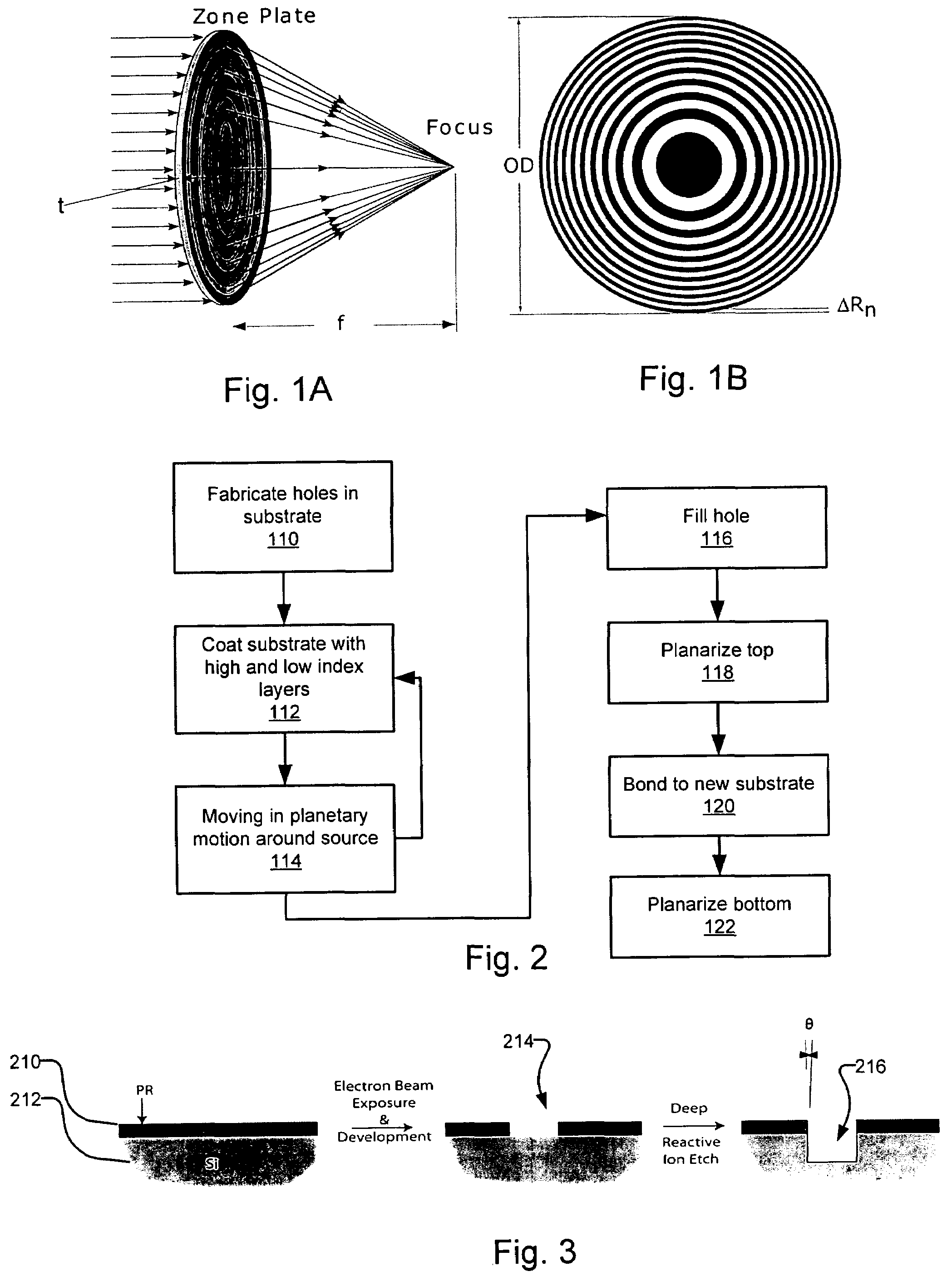Fast x-ray lenses and fabrication method therefor
a technology of x-ray lenses and fabrication methods, applied in the field of x-ray radiography, can solve the problems of loose strength, affecting the accuracy of x-ray rays, and limiting the width of features that can be fabricated, so as to improve the performance, reduce the cost, and improve the sensitivity of elemental analysis
- Summary
- Abstract
- Description
- Claims
- Application Information
AI Technical Summary
Benefits of technology
Problems solved by technology
Method used
Image
Examples
Embodiment Construction
[0029]The two most important parameters for a home-lab based protein crystallography system are the throughput and the quality of diffraction spots. Because a zone plate lens has the best focusing property among x-ray focusing elements as demonstrated by its achievement of sub-100 nm resolution and a large field of view, it provides high quality diffraction data sets with clean diffraction spots. The figure of merit of a zone plate lens in terms of throughput for a zone plate based home-lab protein crystallography system is discussed below.
[0030]In general, the flux F (in photons per second) incident on a protein crystal in a home-lab protein crystallography system using a focusing optic such as a zone plate or a reflection based focusing mirror is given by
F=ηBcL2Δθ2, (1)
[0031]where Bc, L, and Δθ is the beam brightness, the linear dimension, and the divergence of the illumination beam at the position of the protein crystal, respectively; and η the focusing efficiency of the focusin...
PUM
 Login to View More
Login to View More Abstract
Description
Claims
Application Information
 Login to View More
Login to View More - R&D
- Intellectual Property
- Life Sciences
- Materials
- Tech Scout
- Unparalleled Data Quality
- Higher Quality Content
- 60% Fewer Hallucinations
Browse by: Latest US Patents, China's latest patents, Technical Efficacy Thesaurus, Application Domain, Technology Topic, Popular Technical Reports.
© 2025 PatSnap. All rights reserved.Legal|Privacy policy|Modern Slavery Act Transparency Statement|Sitemap|About US| Contact US: help@patsnap.com



